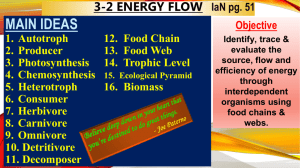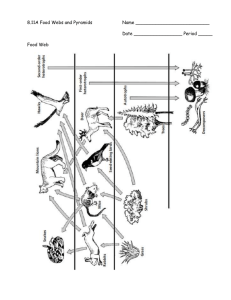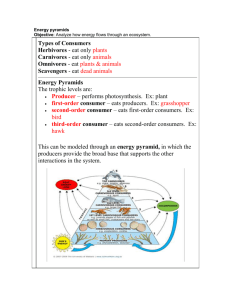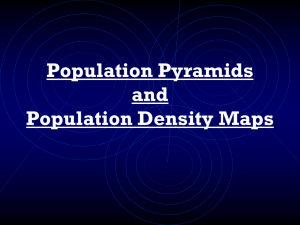ECO PYRAMIDS 2.1.4-2.1.5, 5.3.3
advertisement
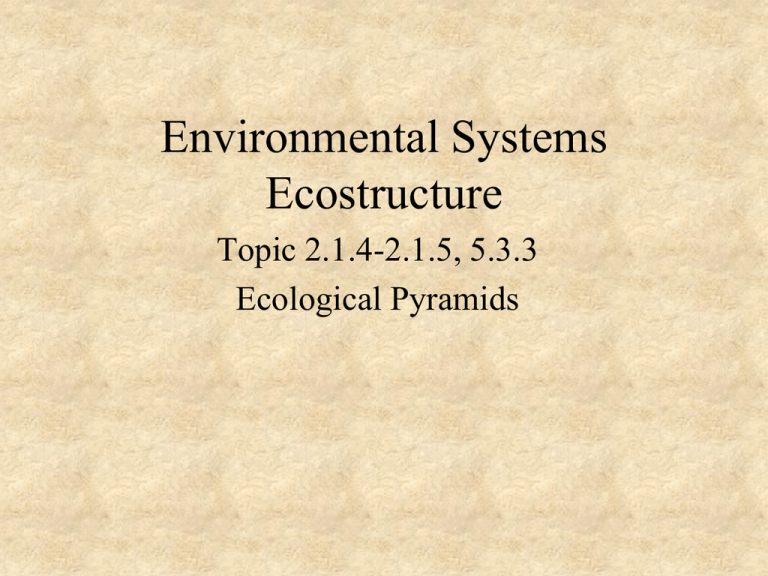
Environmental Systems Ecostructure Topic 2.1.4-2.1.5, 5.3.3 Ecological Pyramids What are Ecological Pyramids • A pyramid is a kind of graph/model that can be used to quantitatively represent differences in the trophic levels in a single ecosystem. • • • • • Three types: Pyramids of productivity Pyramids of biomass Pyramids of numbers Why do most pyramids get smaller as you go up? Pyramid of Numbers • The pyramid of numbers is an ecological pyramid based on the number of organisms at each trophic level • Not all pyramids of numbers look like this. How could one look different? Example of Exception • Many insects can be found feeding on a single plant, so there would be a lower number of producers than the primary consumers. Pyramids of Numbers usually depend upon the size of organisms This pyramid shows that forests have a smaller number of producers than grasslands Pyramids of Biomass • What is biomass? • The pyramid of biomass is an ecological pyramid based on the mass of dry tissue of organisms at each trophic level in an area. – the standing stock of each trophic level measured in grams (or kg) of biomass/square meter (g m-2) … can also be measured in units of energy (J m-2) • Example of when this pyramid could be inverted? Pyramids of biomass can also be inverted. • Example: algae and zooplankton Pyramid of Productivity • The flow in the total available energy at each higher trophic level is called the pyramid of productivity. These show the amount of energy that is passed from one trophic level to the next. – Measured in (g m-2 yr-1) or (J m-2 yr-1), which are units of flow instead of the momentary stock. • Can these pyramids be inverted? Why? 2.1.5 Implications of Pyramids • Why are food chain lengths limited? • The total amount of energy stored in the bodies of a given population is dependent on which trophic level it occupies. • Top Carnivores are very vulnerable if there is a disturbance anywhere in the food chain. – Why? More Implications • Some non-biodegradable toxins that are ingested do not get dissipated back into the environment. • As they pass from one trophic level to the next, their concentration in living tissue actually increases. This is called biomagification or bioaccumulation. • Examples? Example: DDT • DDT is metabolized and excreted much more slowly than nutrients • DDT accumulates in the bodies of organisms as it goes up the food chain. • The hazard of DDT to nontarget animals is particularly acute for those species living at the top of food chains. There is abundant evidence that some carnivores at the ends of longer food chains (e.g. ospreys, pelicans, falcons, and eagles) suffered serious declines in fecundity and hence in population size because of this phenomenon in the years before use of DDT was banned (1972) in the United States.
